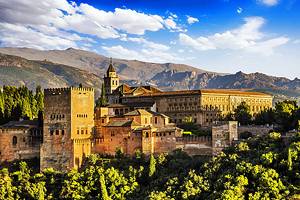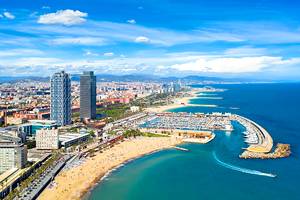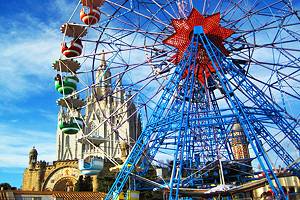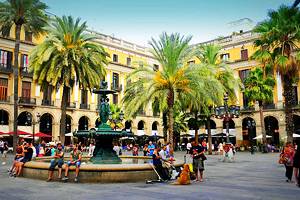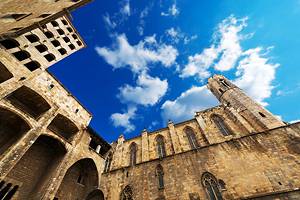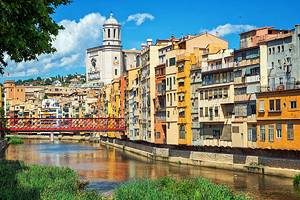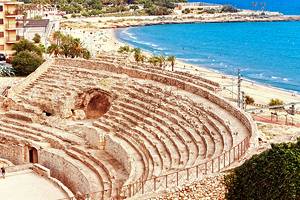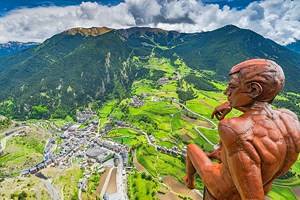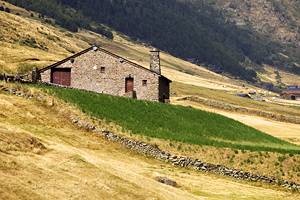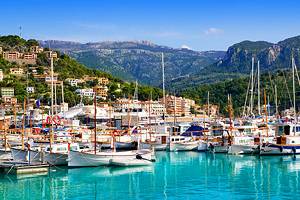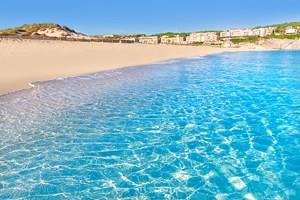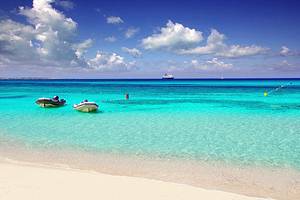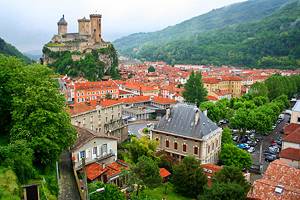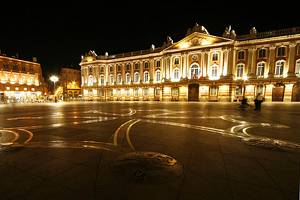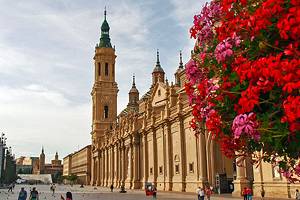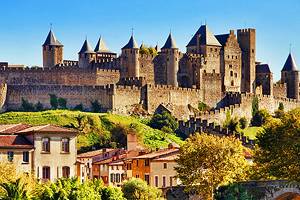Parks in Barcelona
The Mediterranean city of Barcelona has a wide range of gorgeous parks to choose from and, as expected, there are many filled with historic landmarks and buildings. Most of Barcelona's parks circle the city center, and unlike many cities, there are no central parks. The largest of Barcelona's parks sit along the waterfront or are found at the northwest edge of the city where the landscape turns mountainous.
Tourists will find quiet and meditative green spaces with peaceful fountains and neoclassical statuary, play spaces meant to inspire the imaginations of kids and adults, stunning formal gardens, and much more. Discover the city's hidden gems with our list of the best parks in Barcelona.
Parc de la Ciutadella (Ciutadella Park)
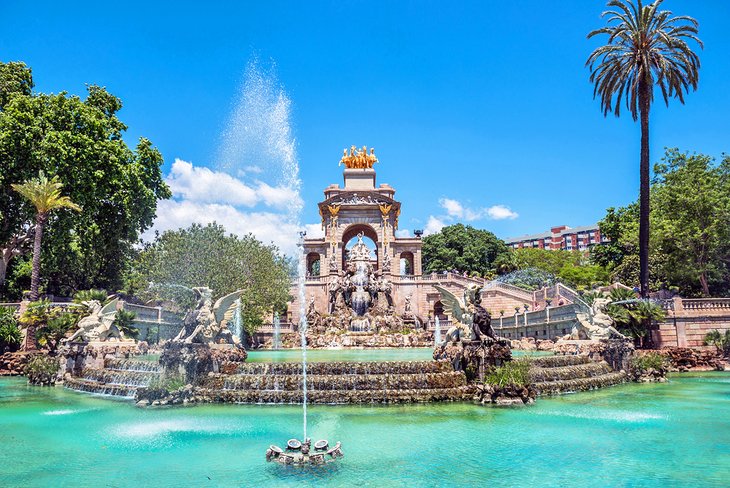
Barcelona's most popular park is on the site of the former citadel, close to the sea and next to the Born neighborhood. It occupies 17 hectares, with formal gardens, a grand waterfall, a boating lake, historic architecture, and a zoological park. At the center of the park sits the citadel's former arsenal building, now home to the Parliament of Catalonia. In front of the parliament building is Plaça de Joan Fiveller, featuring a pond in the center of oval rings of well-manicured greenery.
In the northern corner of the park is the Cascada Fountain, a stunning 19th-century waterfall fountain that overlooks the rest of the park. Two sets of steps flank the waterfall, culminating in an ornate temple-like monument, which is crowned by a gilded sculpture of Aurora riding four horses. The fountain features many stone sculptures as well, including a rearing Pegasus, flower-bearing cherubs, a golden phoenix, a griffin, and a central sculpture of the birth of Venus. Visitors can get excellent views from the top.
Between the fountain and Parliament sits a small lake that offers rowboat rentals and several pavilions for shade. Next to the lake, be sure to visit the unique wooly mammoth sculpture, which was added to the park in 1907. West of the lake are a series of garden paths that lead to the Castell dels Tres Dragons, an 1888 brick and iron structure with crenelated battlements that looks like a classic medieval fortress castle. It has been home to the Barcelona Museum of Zoology since 1934, and is one of the most photographed landmarks in the park.
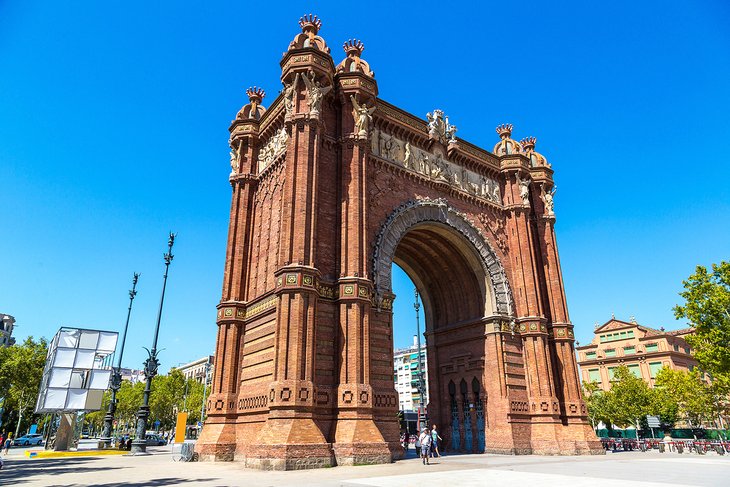
Extending from the northwestern side of the park at its main entrance, between the fountain and the castle, is the Passeig de Luis Companys, a wide pedestrian street flanked by palm trees and ornate columns, with benches sculpted at each base. It leads to the Arco de Triunfo de Barcelona. Throughout the park, there are formal gardens adorned by smaller fountains and monuments.
The southern end of the park is occupied by the Barcelona Zoo, home to around 2,000 animals representing 400 species of mammals, amphibians, reptiles, and birds. Among its most popular residents are giraffes, elephants, red pandas, lions, tigers, penguins, meerkats, rhinos, hippos, and several types of primates. In addition to the animals, the zoo offers educational programs about habitats, sustainability, and biodiversity. Throughout the zoo's gardens, visitors will also find over 100 species of plants to complement the habitats and paths.
Parc de Güell (Güell Park)
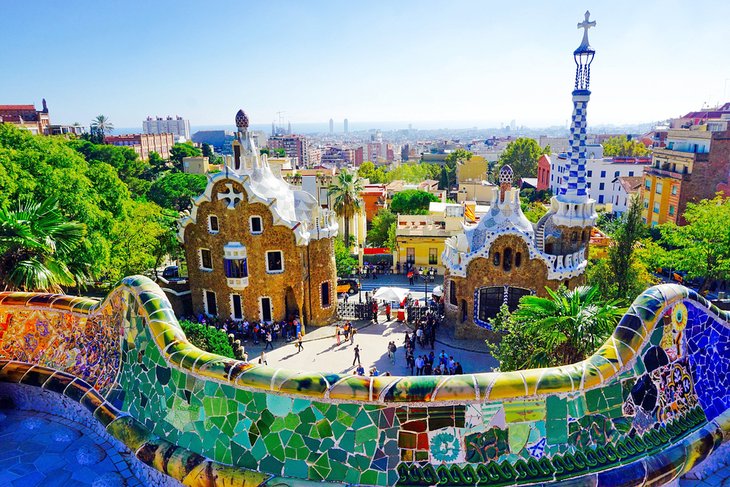
A visit to this park is a must for any art lover. It houses a stunning collection of works by Antoni Gaudí. The architecture is a mixture of the whimsical and rustic topped with Mediterranean and modernist influences, but words do little to accurately describe the beauty of these creations.
When entering from the southeastern side on Carrer d'Olot, visitors pass between two gatehouses, which were inspired by the story of Hansel and Gretel.
Just steps from here is the Dragon Stairway with its mosaic dragon sculpture, which leads into the Hypostyle Room. Here, an astounding number of columns hold up an undulating ceiling covered in more mosaics. The upper level of this structure is the esplanade, which is lined by a decorative wall that ripples in colorful waves, representing a sea serpent. The outer walls of the elevated concourse are flanked by vaulted columns that resemble twisted tree trunks made of stone.
Beyond the buildings, the park is wound with paths through garden areas and woodlands that feature magnolias, lavender, and rosemary, as well as many varieties of trees, including almond and olive trees. The park's natural areas are free to enter, but an admission fee is charged for the Gaudí House and Museum, as well as the "monumental zone," which houses most of Gaudí's works.
Parc de Montjuïc (Montjuïc Park)
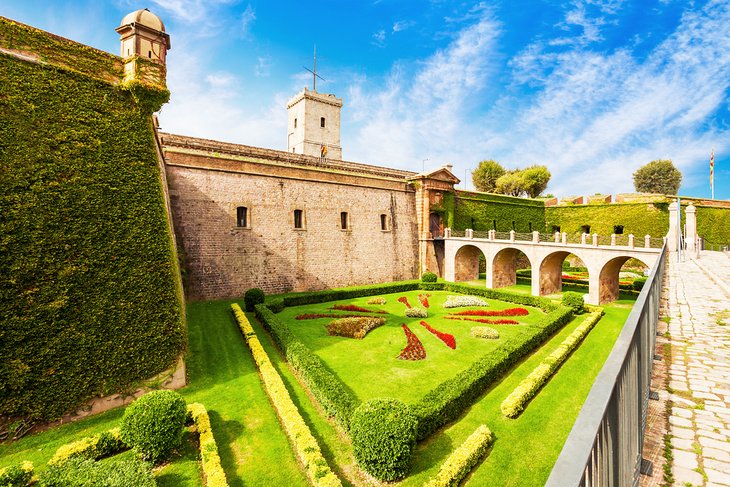
Located on the slopes of Montjuïc, this park encompasses a huge area on and around Montjuïc, south of the city center. The small mountain overlooks the main Mediterranean terminals, with the 17th-century Castel de Montjuïc at its peak, now housing a military museum that affords amazing views of the city and the water.
The Mirador de Montjuïc is the main observation deck near the castle, and the Mirador d'Ocell de Mar and Mirador de Migdia afford equally stunning views.
Below the castle to the southwest is one of the park's most magnificent gardens, the Botanic Garden of Barcelona, accompanied by the Museum of the Botanic Institute of Barcelona, where visitors can learn about the legacy of the fine garden. Closer to the bottom of the slope are the Jardins de Joan Maragall and the Historic Botanic Garden, both home to stunning plants, architecture, and decorative fountains.
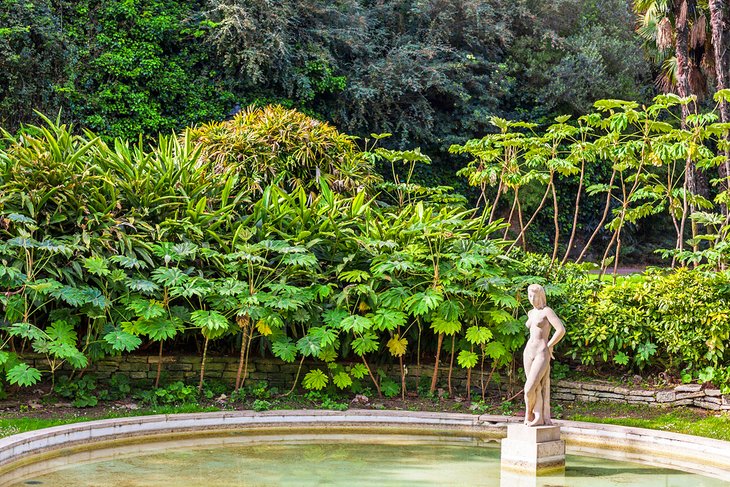
Within the park's boundaries also lie many of Barcelona's major landmarks, including the University of Barcelona and the Olympic Stadium. Many of the sports facilities created for the 1992 Summer Olympics remain in use, from the numerous fields and the track and field stadium to rock climbing walls and an excellent skate park.
Montjuïc Park is also home to several of Barcelona's top museums, including the Olympic Sport Museum (Museu Olímpic i de l'Esport Joan Antoni Samaranch), the Barcelona Ethnology Museum (Museu Etnològic de Barcelona), and the macabre but fascinating Museum of Funeral Carriages (Museu de carrosses fúnebres).
Jardins de Pedralbes (Pedralbes Gardens)
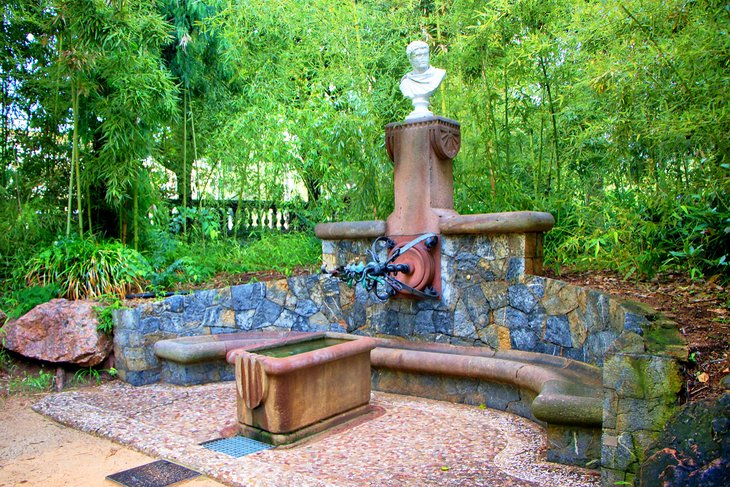
This park occupies the grounds of the former residence of the Spanish royal family, most recently occupied by King Alfonso XIII until it was gifted to the city in 1931. The main entrance to the Jardins de Pedrables is along Avinguda Diagonal, and after visitors pass through the wrought-iron gate, they are met by a pool presided over by a marble female figure. The former palace stands at the opposite end of the park, now housing the Museums of Decorative Arts, Ceramics, and Interior Design.
The formal gardens have a combination of both English and French styles, but Mediterranean influences are abundant, with the presence of numerous statues throughout the park, many of which were sculpted in the early 20th century. One of the oldest sits in front of the palace, an 1861 sculpture of Queen Isabel II holding the infant Alfonso XII.
The park has many decorative flower beds, but it is most remarkable for its many rare trees, including a Sictus tree (Tetraclinis articulata), stone pine (Pinus pinea), and several Himalayan cedars.
Other notable trees include Japanese cedars, Atlas cedars, and incense cedars. There are also several types of cypress, as well as varieties of shrubs, including boxwood and sweet bay. Bougainvillea can be found climbing trees and structures throughout the park, and it is a distinguishing feature of the 250-meter perimeter wall of the garden.
Parc del Laberint d'Horta (Horta Labyrinth Park)
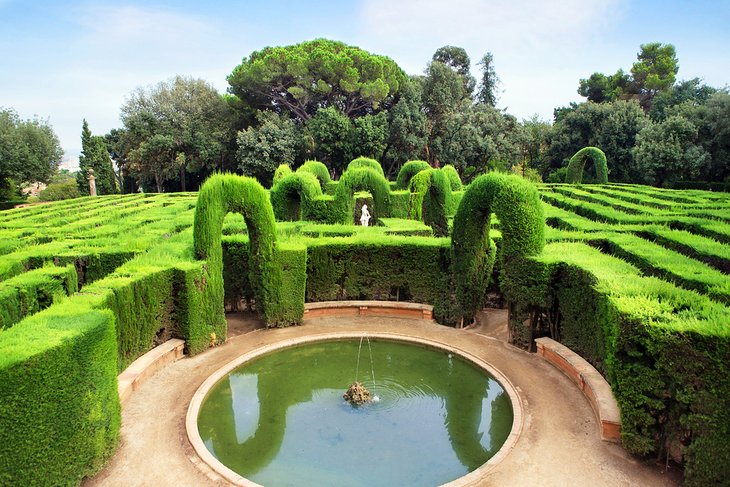
Although it sits on the outskirts of the city to the north in the Horta neighborhood, the Horta Labyrinth Park is well worth the time and effort. Originally designed in 1791 by Domenico Bagutti, the labyrinth at the center of the park is formed with manicured cypress trees that provide dense walls. At the center of the maze is a small fountain and a statue of Eros, the Greek God of Love.
There are numerous temple-like pavilions throughout the park, many of which provide views of the labyrinth and park from above. In each of these and throughout the park, tourists will find statues of Greek figures, including Theseus and the nine muses. At the back of the park, there is an elevated neoclassical pavilion and pond, from which tourists can enjoy the best views of Barcelona.
The terraced grounds provide a lovely backdrop for meandering nature paths, which are well-shaded, with plenty of stone and brick benches for admiring the peaceful surroundings. The main walkways are paved, while well-maintained dirt trails branch off into wooded areas. Although it is not open to the public, the estate's 14th-century mansion, Torre Soberana, is visible through the gates.
Jardines de Laribal (Laribal Gardens)
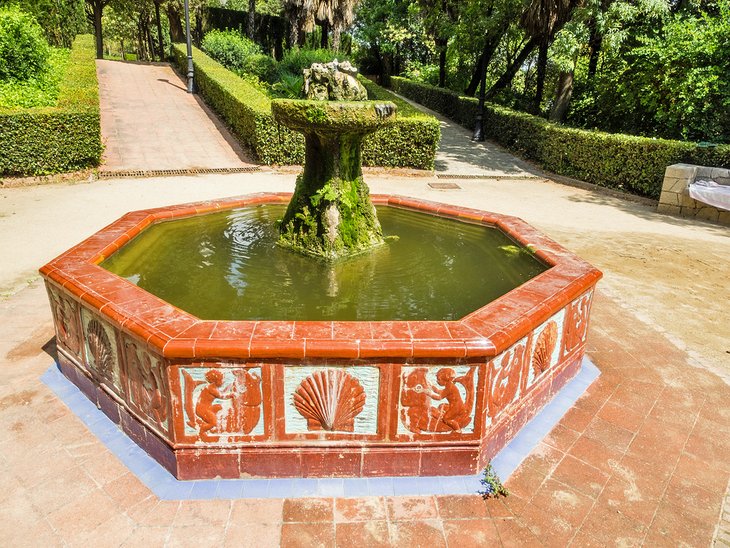
Situated on the lower slopes of Montjuïc and adjacent to the larger Jardins de Joan Maragall, the Laribal Gardens occupy five hectares of terraced landscape that was designed for the 1929 Barcelona World's Fair. The Joan Miró Foundation museum sits in the eastern end of the park near the Escales del Generalife, a long and steep set of stone steps, which were inspired by the Alhambra. They are unique for the small aqueducts built into the side-rails, and provide periodic benches and ponds along the climb.
There are several notable sculptures and decorative fountains throughout the garden, including the Font del Gat (Fountain of the Cat), a popular picnic spot. If you didn't bring a picnic, there is a café right there for refreshment. The park's flora features a mixture of trees, aromatics, and decorative flowers in terraced gardens. Visitors will find ivy among the cypress, fig, and palm trees, and more formal gardens of rosemary, lavender, and geraniums, as well as the Colla de l'Arròs rose garden.
While visiting, be sure to take a walk over to the Greek Theater (Teatre Grec), just north of the eastern end of the park near the Escales del Generalife, which also has lovely gardens surrounding it.
Parc de Cervantes (Cervantes Park)
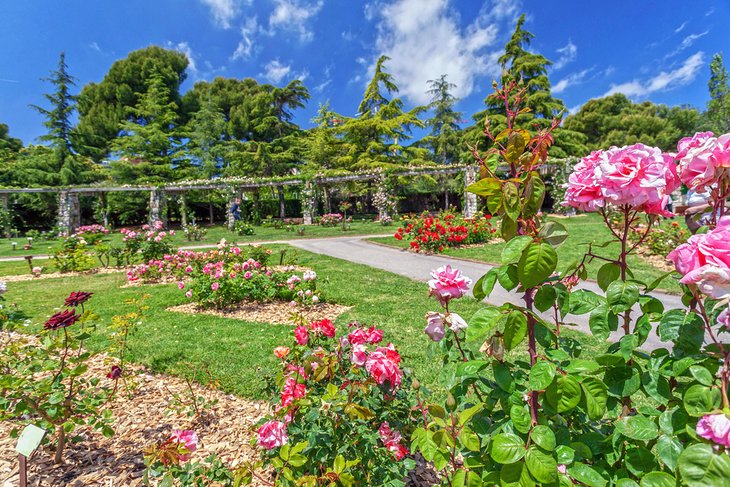
Cervantes Park is best known for its roses, with more than 10,000 rose bushes blooming every year from spring through fall. Every May, it is also host to the International New Rose Competition, which challenges horticulturists to present new varieties of the fragrant flower. This wedge-shaped park is located west of the city center in the Les Corts district, occupying four hectares and utilizing every centimeter.
Rose vines climb up rustic trellises that periodically stretch over the walkways to create floral arcades, giving the park a festive atmosphere throughout, and a long, lush arcade greets visitors at the park's entrance off Ronda de Dalt. In the western point of the park, there is a well-equipped play area that includes climbing structures, swings, slides, and table tennis, as well as many shaded benches and a fountain.
Parc de l'Espanya Industrial (Espanya Industrial Park)
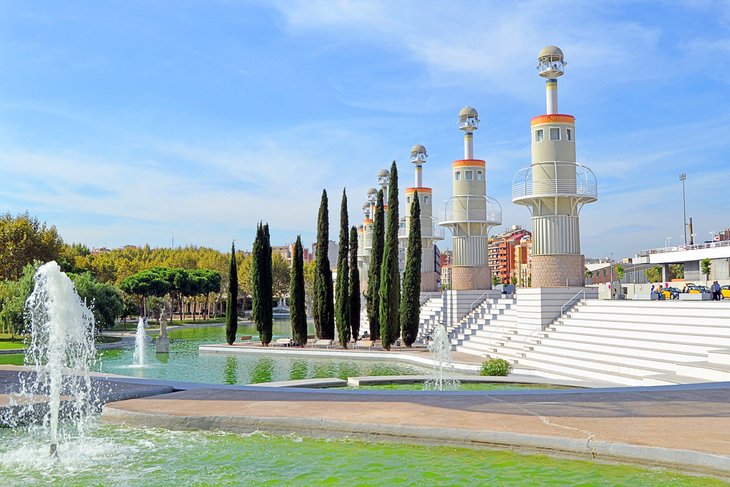
Although the term "industrial park" does not typically inspire visions of lush grass and flower beds, this small city park is named for its location in the center of the urban Sants-Montjuïc neighborhood. It does have a somewhat industrial feel, but designers Luis Peña Ganchegui and Francesc Rius intentionally combined aspects of modern art and architecture within their green space to celebrate the junction instead of creating a world entirely separate from the surrounding streets.
The park is located next to the main train station, Sants, and is a favorite place for both commuters and tourists to rest before and after journeys.
The park was definitely designed to capture the imagination, and its most popular feature for kids is the giant Dragon of St. George sculpture, which doubles as a slide for kids.
The park's central feature is its artificial lake, flanked by lighthouses and broad steps, an attempt to emulate Roman baths. At the center of the lake, a statue of Neptune overlooks the water, and there are numerous fountains "islands" where visitors can enjoy the atmosphere.
The southern half of the park is occupied by an expansive lawn dotted with shade trees, providing a place to get out of the sun and be surrounded by lush greens.
Parc de Turó de la Peira (Turó de la Peira Park)
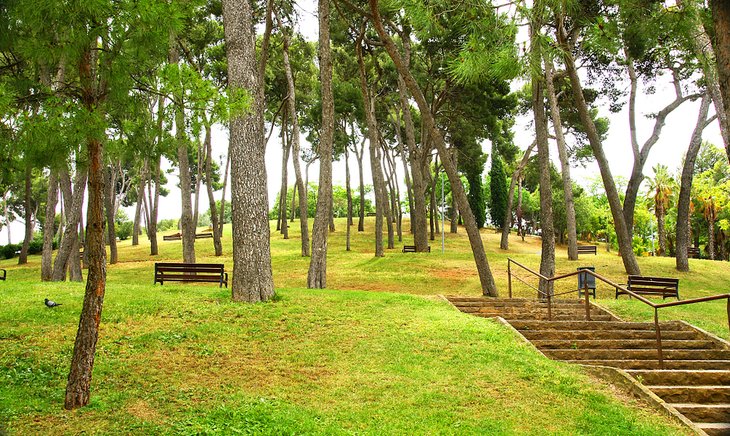
The views from the peak at the center of this lovely neighborhood park are excellent, providing a perspective of the Barcelona skyline with the water in the distance. Tourists can reach the top via a gradual winding path, or opt for the shorter but more strenuous option of a stone staircase.
The park covers a total of eight hectares and offers a range of sporting facilities, from bocce and table tennis to volleyball and soccer. There is also a good children's playground and a dog park, and there are ample benches throughout the park, many of which sit beneath shady trees.
Parc de Aigües (Aigües Park)
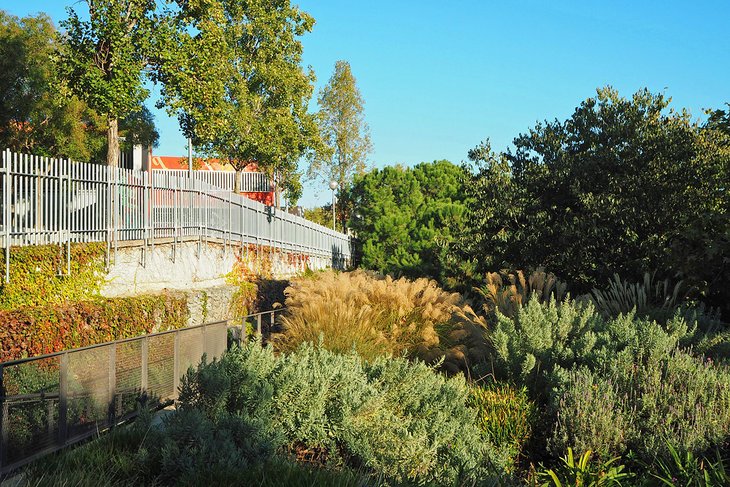
Located northwest of the city just beyond the urban spread, Aigües Park was first landscaped at the direction of the chairman of the Barcelona Water Company in the late 19th century. It was turned into a public park in 1978, but still retains several of its original trees, including fig and orange.
This mountainside park is terraced in stone, with some areas dedicated to peaceful contemplation while others offer recreation. Within the park there are three playgrounds and several small sports areas, including a pétanque court. There are also plenty of benches and picnic tables in the shade of cypress, yucca, and sweet bay trees.



